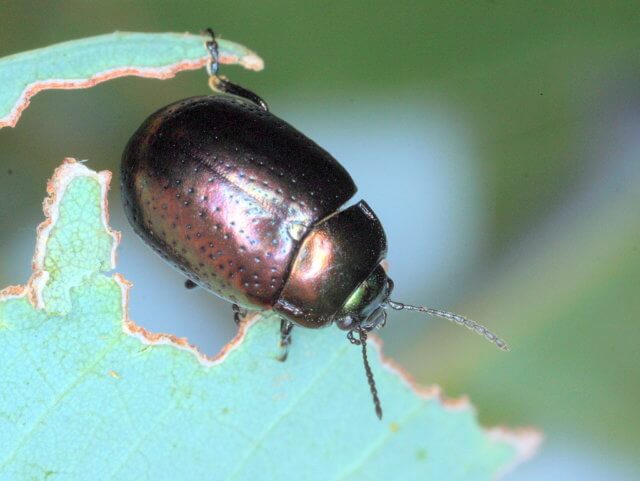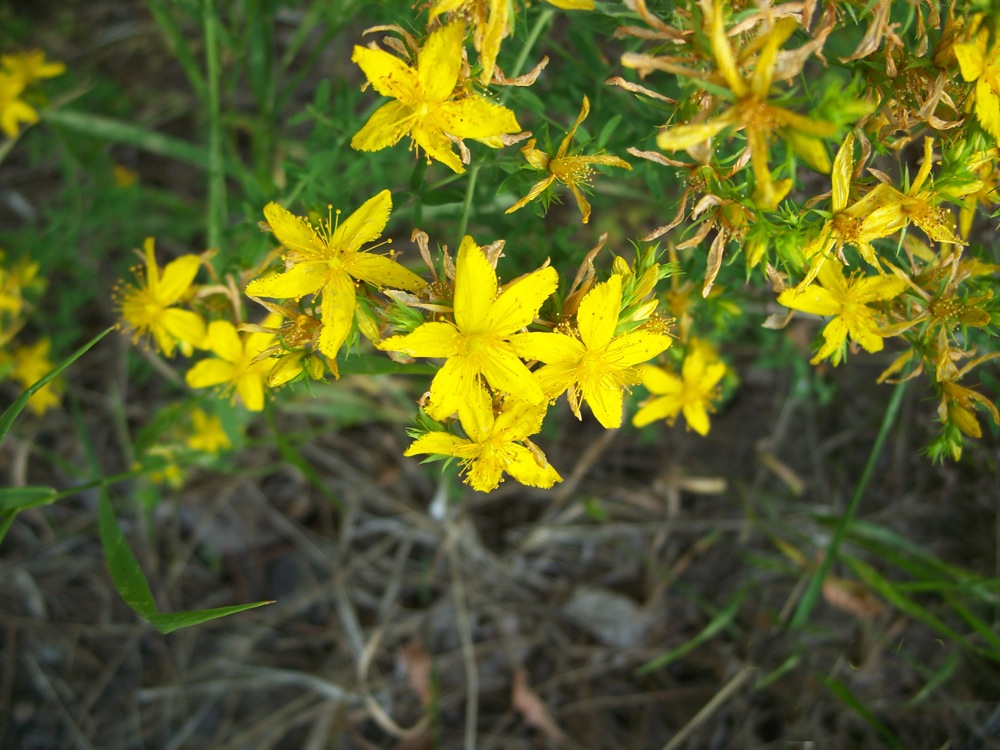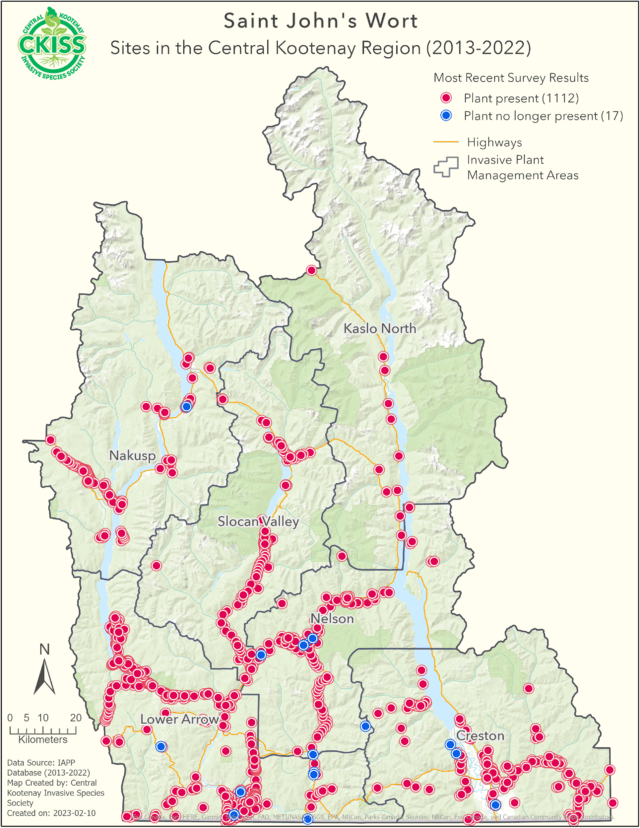Hypericum perforatum
Description
- St. John’s Wort (Hypericum perforatum) is a perennial plant which can grow up to 1m tall.
- The flowers are bright yellow with five petals, appearing in clusters of up to 100 flowers per stem. The leaves are small and ellipse shaped.
- When held up to the sun, the leaves appear “perforated,” having many small, translucent dots.
- After flowering, capsules form containing many seeds, which can remain viable in the soil for up to ten years.

Consequences of invasion
- St. John’s Wort contains two toxins, hypericin and hypericum red which can cause photosensitivity, weight loss or (rarely) death, if consumed in large quantities by grazing animals.
- The rapid and dense spread of this plant reduces the growth of native species, consequently decreasing amount of appropriate food available for livestock and wildlife.
Introduction and spread
- The plant is native to Europe, western Asia and North Africa.
- As it is used in herbal medicine, it has likely been spread and cultivated for this purpose.
- The plant reproduces by both seed and vegetative reproduction.
- The seeds are easily dispersed by wind, water, animals or human activity and can grow asexually without pollination (apomixes).
- The roots spread laterally and new plants can sprout from these roots, forming an interconnected system of plants.
Status in the CKISS region
- St. John’s Wort has become widespread in the CKISS region. Its management priority is classified as Strategic Control on the CKISS Annual Priority List.
- While it is not realistic to eradicate this species at the landscape level, this species may be treated at high priority sites (e.g. wildlife habitat, corridors of spread, adjacent to agricultural land, restoration sites, etc.) based on specific land management objectives.
- To learn more about how CKISS classifies and manages invasive species, see our Invasive Species Priority Lists page.
Integrated pest management options
- Prevention is the most effective option – this plant should not be cultivated for any purpose.
- Select non-invasive plants for your garden, become PlantWise.
- Removing only the stems stimulates regrowth as the root system is difficult to remove.
- Tilling the soil and then immediately replanting with other perennial grasses may be effective.
- Two biocontrol beetles have been released in BC (Chrysolina spp.) with some success.
- Other biocontrol agents are still being researched.
- Chemical control may be an option in certain situations, contact a local professional to determine whether this will be appropriate.



